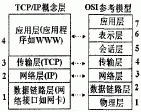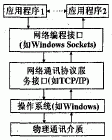With the development of network technology, network control technology has attracted more and more attention. The network control system combines computer network technology and automation control technology to achieve network control. The network control system integrates machine tool technology, control technology, communication technology, detection technology, image technology, computer software technology and network technology. The remote monitoring of the machine tool through Internet/Intranet can make the machine tool more flexible and controllable. . As an emerging technology, network control technology has attracted extensive attention from many research institutes [1~3]. Various types of network control technologies are being researched and developed, and some are based on Web communication platforms [4~6]. The use of Socket technology, and other based on CORBA middleware technology, etc., will certainly bring a meaningful change to the development of the manufacturing industry. This paper introduces the network control system of CNC machine tools developed by the author. The system uses Windows2000 as the development platform, develops with Visual C++ tools, and adopts Windows Sockets to realize the real-time monitoring function of the machine in the LAN. 1. Implementation of TCP/IP network communication 1.1 Introduction to TCP/IP The so-called TCP/IP is just an abbreviation, which refers to the network protocol IP (Internet Protocol) and the transmission control protocol TCP (Transmission Control Protocol). It is two very important communication protocols in the Internet technology and is applicable to communication on any set of Internet. The structure of TCP/IP divides the network into four layers, namely the application layer, the transport layer, the network layer, and the data link layer. This combines some of the seven layers of the Open System Interconnection Reference Mode (OSI) seven-layer transport reference model developed by the International Standards Organization (ISO). The mapping relationship between the two is shown in Figure 1. Figure 1 Mapping between TCP/IP and OSI structural models 1.2 Introduction to WindowsSockets Network communication based on TCP/IP can be realized by Windows Sockets. A socket is a general-purpose network programming interface that is an abstraction of communication endpoints and provides a mechanism for sending and receiving data. There are currently two types of section words: DatagramSockets and StreamSockets. We use streaming sockets because streamed sockets can send data to destinations in a sequence without repetition, providing a reliable connection-oriented way of transferring data. Windows Sockets provides a simple API for referenced program developers, and applications call their interface functions to communicate with each other. In addition, Windows Sockets uses the underlying network communication protocol (such as TCP / IP) functions and operating system to achieve the actual communication work. The relationship between them is shown in Figure 2. Figure 2 Relationship between applications and Sockets Next page Hubei Chengze Diamod Products Co., Ltd. , https://www.ryomaltools.com

Research on network control technology of CNC machine tools (Figure)
introduction